What Is Gamification?
Gamification is a new vocabulary word lately, and there’s even a summit about it. What is the definition of gamification? The word gamification is used to describe companies integrating game mechanics into their non-gaming product or service to drive user engagement. These companies are “gamifying” their products and services by adding light game mechanics on top of them.
What does that actually look like? While the term is relatively new, the tactics aren’t and have already been in play for quite some time. Here are some examples of gamification in action.
Real World Examples of Gamification
Collecting Friends on Facebook and Twitter, and the LinkedIn LION Phenomenon (Game Mechanic: Collection)
Facebook, Twitter and LinkedIn are great examples of users who are collecting a list of friends, or thumbnails of friends. Twitter is a particularly good example, putting the number prominently at the top and picture collection of all the people you’ve follow at the bottom.
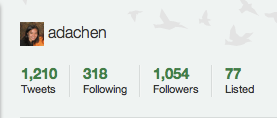
My Twitter (@adachen)
For LinkedIn, the desire to collect people has created the peculiar phenomenon of LinkedIn LIONs. LIONs are “Linked In Open Networkers,” individuals who are open to connecting with people whom they have had no prior business relationship with. This is a somewhat unintended result, since LinkedIn would naturally want to keep social graphs accurate and this goes against that. These LIONs have even evolved to create a website complete with leaderboard (TopLinked 50 Leaderboard) for the top LIONs.
Collecting Badges in Foursquare (Game Mechanic: Collection, Achievement)
Foursquare is both a way to collect and record locations that you’ve visited, but has layered on mayorship and badge collection. Through Foursquare, checking in the most in the last month for a restaurant can make you mayor of that location. A contender for the position can trigger a competition for mayorship. Foursquare also allows their users to unlock badges based on their check-in activity.

One clever facet of badge collection is that they are not linked to particular places, but instead particular types of places. The Gym Rat badge, for example, can be earned by checking in 10x a month at any gym, not just one gym. This creates a common language and context for people to relate with one another, regardless of whether they are next-door neighbors or across the nation from one another.
Leveling Up in My Starbucks Rewards (Game Mechanic: Points, Achievement, Leveling, Rewards)
Starbucks has a rewards program called My Starbucks Rewards. Basically, it starts with a Starbucks gift card pre-loaded with cash, but the game mechanics kick in as soon as you’ve registered your card. After registration, Starbucks shows a progress bar and points in the form of stars to track your progress. Stars are earned for every purchase with your registered Starbucks card.

Once you’ve earned 5 stars, you advance to the Green level. This level rewards you with free refills on coffee and tea, free syrups and milks, and access to select trial offers. Get to 30 stars, and you get a free drink for every 15 cards and a personalized gold card.
Earning Points in My Coke Rewards (Game Mechanic: Points, Collection, Rewards)

My Coke Rewards is a rewards and loyalty program for consumers of Coca Cola products. Each product has a unique alphanumeric code printed on the label, and these codes can be collected and redeemed at the website for points. The points from the codes can be redeemed for sweepstakes entries and rewards like electronics and retailers.
Travel Leaderboards in Tripit.com (Game Mechanic: Competition, Collection)
Tripit.com is actually one of my favorite services. I love how simple it is to forward my trip itinerary to an email, and instantly gain access to a clean itinerary on my iPhone. Tripit also allows you to connect with other users of the service. One fun way they’ve gamified their site is by introducing travel leaderboards and personal statistics.
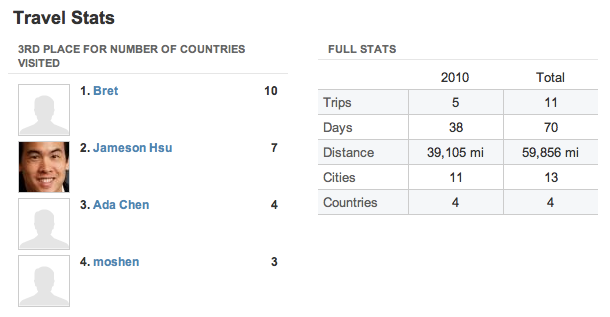
Through the travel leaderboards, I can not only collect my own record of travel achievements, but see how I compare against my friends. As you can see, not doing so good compared to other jetsetters.
Gifting membership through Netflix (Game Mechanic: Gifting)
Part of Netflix’s user acquisition strategy is the free trial and then converting the trial users into paid subscribers. They occasionally send out emails inviting their existing subscribers to invite their friends and family.
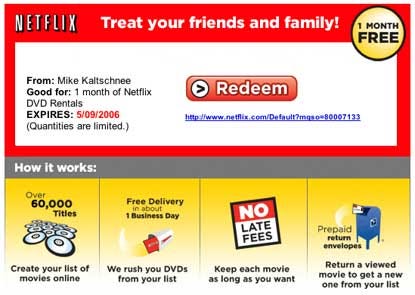
Source: hackingnetflix.com
Cleverly, these free trials are described as a gift to treat your friends and family, while they are basically an invite to trial the service.
Personalization and Self Expression through NIKEiD (Game Mechanic: Personalization, Self Expression)
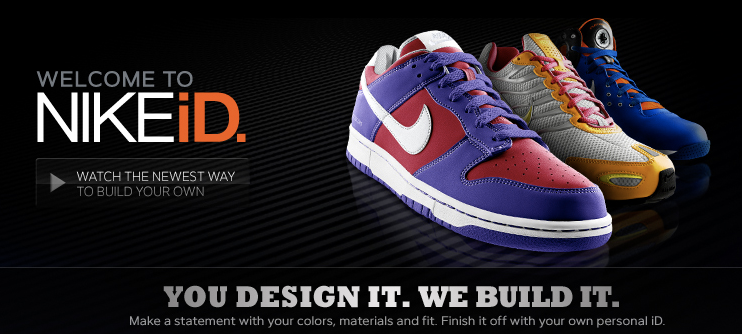
While many retailers take advantage of limited edition and designer edition shoes to allow consumers outlets for personality and self-expression, NIKE has take it one step further with their NIKEiD shoes. NIKE allows full personalization through their ability to create on-demand customized shoes for each person. Through their NIKEiD site, you can fully customize the colors, materials, sizing, and fit of your very own special Nike shoes and they will ship it just for you.
In Conclusion
The practice of gamification is commonplace and well-practiced. My pile of rewards cards shows that companies have been on to the idea of motivating users through points, levels and status for a long time.
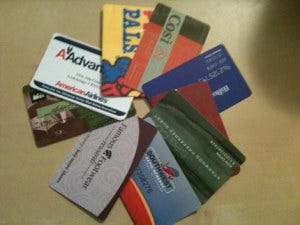
However, while many of these companies have been using these strategies for a while, they are likely not thinking of this consciously as gamification.Viewing these tactics through the lens of game mechanics and psychology prompts deeper analysis around effectiveness and engagement. Are they optimizing the virality of gift invitations, or figuring out how to tune their rewards systems to be fun? There’s a lot of psychology and science underpinning why basic game mechanics can be so effective in motivating consumers to engage. Hopefully, as gamification becomes more mainstream, the result is that products will be more fun and engaging!
Any big examples I missed? How are you thinking about gamifying your product?